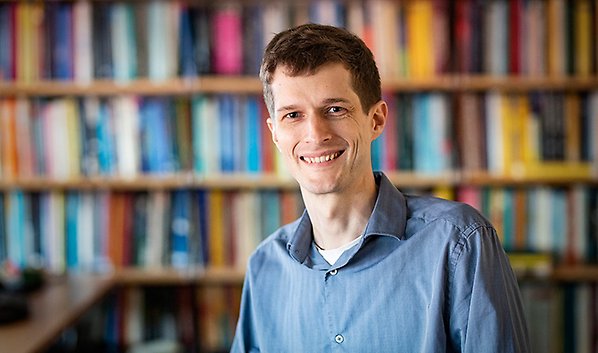Martin Herschend tells about his research in algebra

Martin Herschend. Photo: Mikael Wallerstedt
Even in his early teens, Martin Herschend was more interested in the mathematical method than the results. Once, when he was programming computer games with a friend, Martin spent time calculating how to move the cursor across the screen, while his buddy sat by, impatiently waiting to play.
Martin Herschend was born in 1981. In 2008, he defended his thesis On the Clebsch-Gordan problem for quiver representations. His specialty is representation theory.
After his dissertation, he received a postdoc in Nagoya, Japan. His host, Professor Osamu Iyama, had developed higher dimensional Auslander-Reiten theory, giving Martin the opportunity to research within this theory for two years.
His time in Japan was rewarding on a personal level, as well. He met his future wife there and now they have two children.
In 2013, he received a permanent senior lecturer position at the Department of Mathematics at Uppsala University.
“In my work, I combine teaching with research. Teaching a large number of people contributes to developing the field mathematics. Seeing a student suddenly understand a mathematical concept is a very rewarding feeling.”
When not teaching, Martin is doing research. He is currently investigating the properties of a family of algebra that generalises the Heisenberg algebra.
“The University offers a fruitful and active research environment in my field. My main focus is on understanding and finding solutions to open problems."
If he had not stuck to mathematics, Martin thinks he would have been a programmer.
“But I also play piano and guitar and I like to cook, so I might have something with that instead.”
Representation theory
Representation theory deals with representing abstract mathematical objects in a concrete way. For example, it can address the symmetries of any physical system. By representing the symmetries geometrically, tools from linear algebra can be used to obtain information about the original system.
Modern representation theory has links to many parts of mathematics, such as algebraic and symplectic geometry. By exploring these connections, researchers hope to gain insight into mirror symmetry and other areas.
